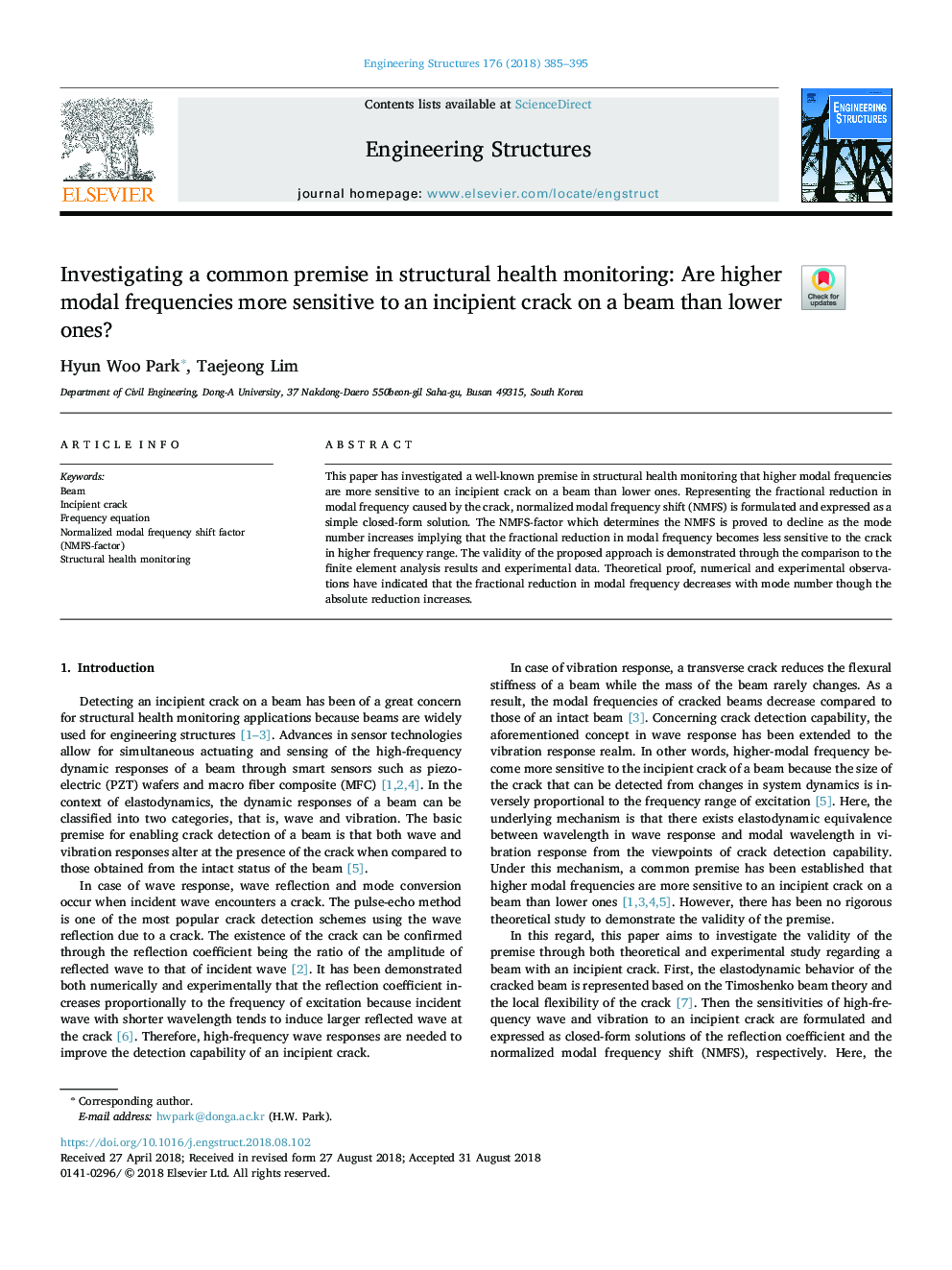| Article ID | Journal | Published Year | Pages | File Type |
|---|---|---|---|---|
| 10148841 | Engineering Structures | 2018 | 11 Pages |
Abstract
This paper has investigated a well-known premise in structural health monitoring that higher modal frequencies are more sensitive to an incipient crack on a beam than lower ones. Representing the fractional reduction in modal frequency caused by the crack, normalized modal frequency shift (NMFS) is formulated and expressed as a simple closed-form solution. The NMFS-factor which determines the NMFS is proved to decline as the mode number increases implying that the fractional reduction in modal frequency becomes less sensitive to the crack in higher frequency range. The validity of the proposed approach is demonstrated through the comparison to the finite element analysis results and experimental data. Theoretical proof, numerical and experimental observations have indicated that the fractional reduction in modal frequency decreases with mode number though the absolute reduction increases.
Related Topics
Physical Sciences and Engineering
Earth and Planetary Sciences
Geotechnical Engineering and Engineering Geology
Authors
Hyun Woo Park, Taejeong Lim,
